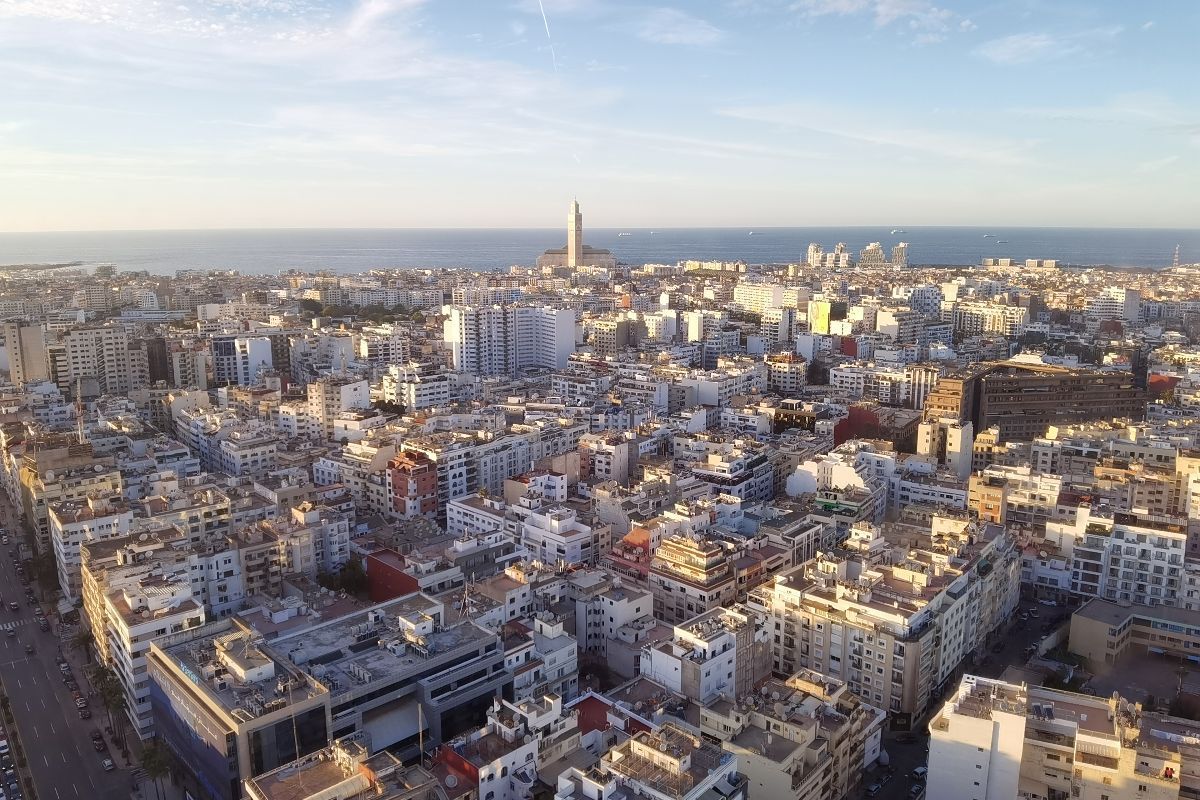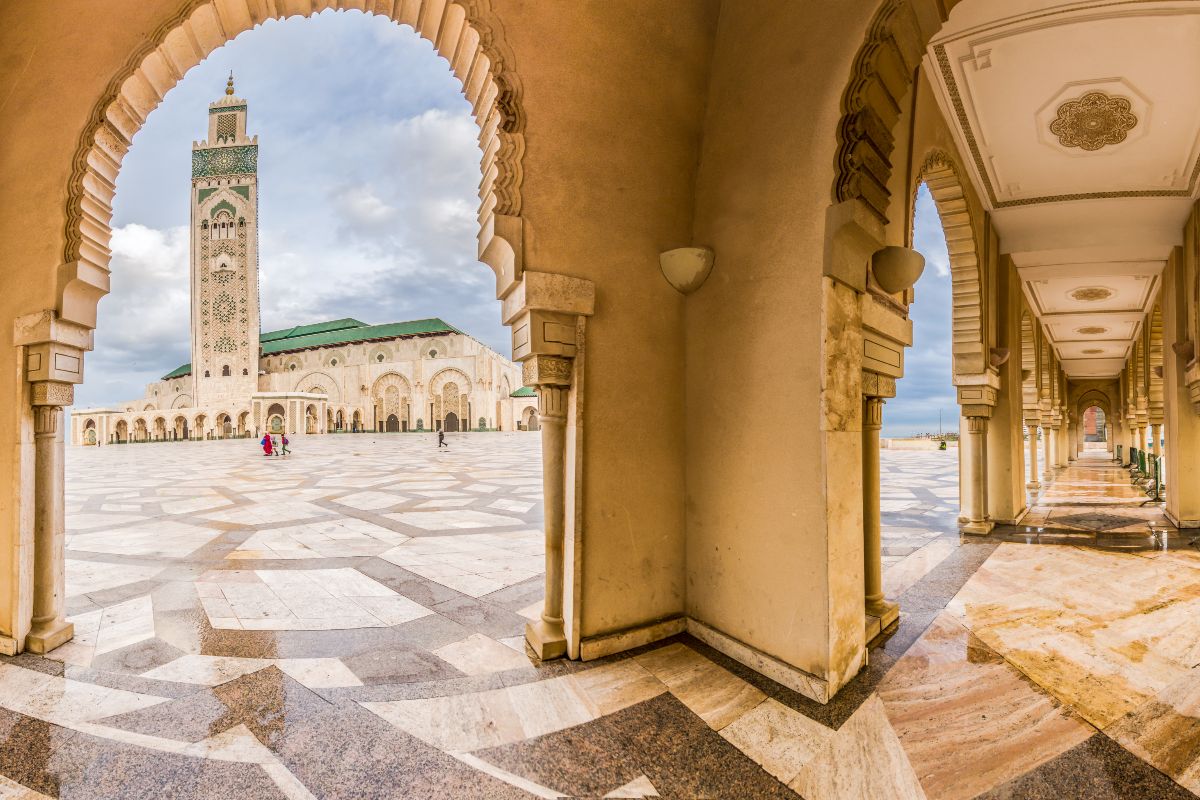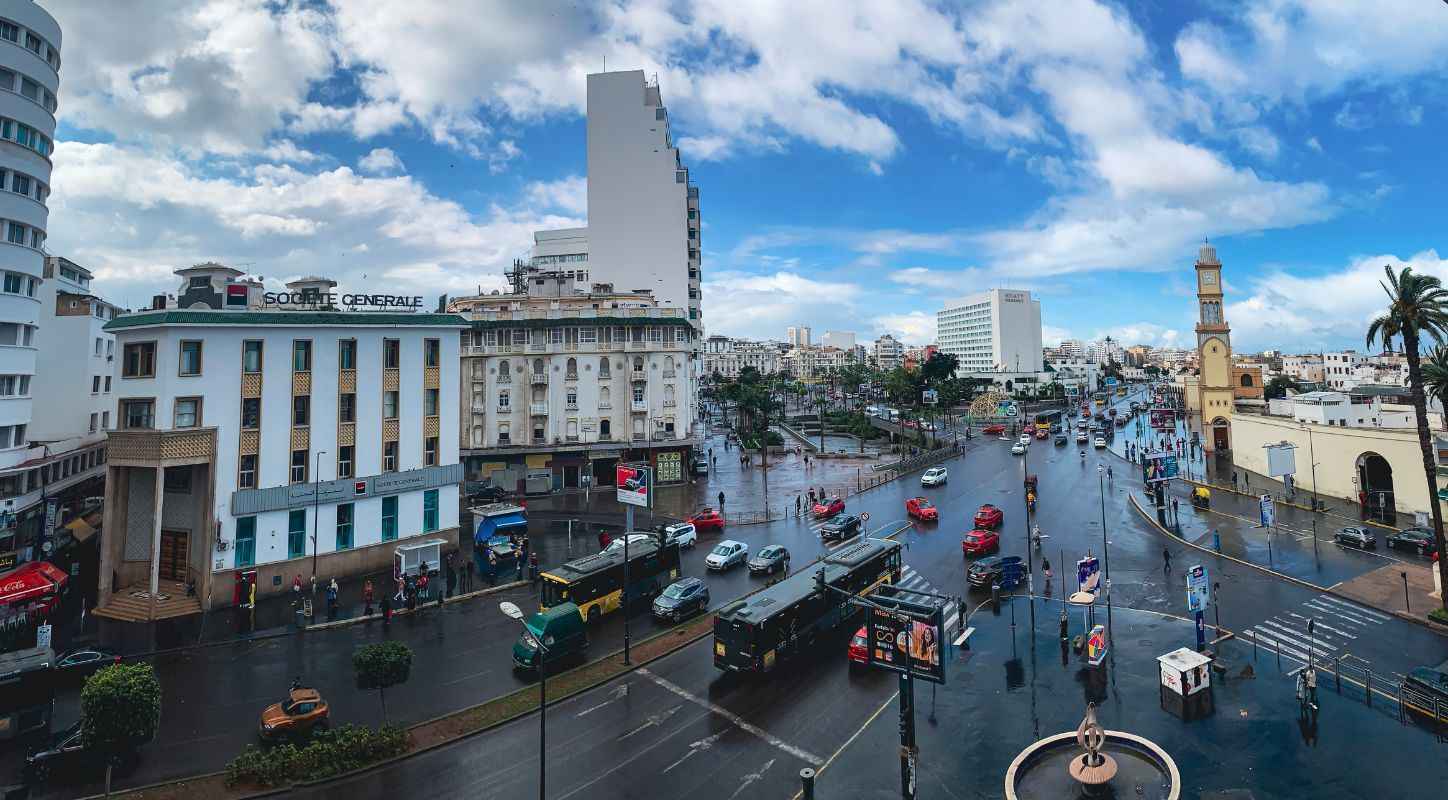Tourists do not live by historical monuments and vacation resorts alone. And the best example of this is Casablanca, a city that may not stand out for either of these two things but has a lot to offer its visitors. On this page we tell you about it, as well as show you practical information for you to take good note if you are going to start or finish your Morocco tour in this great city.
Casablanca is located on the Atlantic coast, in the center of the country, halfway between Tangier and Agadir. It is the capital of the Casablanca-Settat region. But if Casablanca is famous for anything, it is for its large population: it is the largest in Morocco in terms of number of inhabitants, with more than 4.3 million, a figure that exceeds 8 million if we also count its metropolitan area (Greater Casablanca), which also includes other towns such as Mohammedia and Nouasseur.
Its climate mixes the warmth of its latitude and the Atlantic influence, not only for its cold sea currents but also for its cool breeze, which tends to temper the atmosphere in the summer season.
If you are planning to include Casablanca in a wider tour of the country, it will be useful to know this list of distances that separate the city from other Moroccan destinations:
As is to be expected from the large size of its population, it is also one of the best connected cities in Morocco, not only with other national cities but also with other international destinations. This is because it has the largest airport in the country: Casablanca Mohammed V Airport, located about 30 km from the city. More than 10 million passengers pass through here every year, many of whom are tourists who choose this route to enter or leave the country.
Casablanca has also made a strong commitment to cruise ships in recent years: a huge new terminal has been built in its port for this type of vessel, with the aspiration of attracting the major Atlantic circuits. However, the closed cruise and private crossings are practically the only ways to access Casablanca by sea, since there are no regular ferry lines.
On the other hand, it is perhaps the Moroccan city with the greatest variety of railway lines, which connect it with practically every corner of the country. Special mention should be made of the recent Al Boraq high-speed line, the Moroccan bullet train linking Casablanca with Tangier, running along the entire Atlantic coast and stopping at Rabat and Kenitra.
And those who prefer to travel by road in Morocco will find that there are many bus lines that reach here, and several highways that serve as entry routes: the A1 from Safi and El Jadida, the A3 from Marrakech, the A8 from Beni Mellal and the A5 from Rabat and Kenitra. Therefore, those who resort to private transportation will have many options in their hand to configure a circuit by car in the area.

In Casablanca, the existence of the oldest human being in Morocco has been documented: the remains of a man who lived about 300,000 years ago were found in a nearby cave. The Phoenicians, in the 6th century BC, already populated the area now occupied by the residential district of Anfa, but the real original nucleus of what we know today dates back to the period following the Arab conquest, when it became the capital of the Berber kingdom of the Berguata.
In the 12th century it was conquered by the Almohads, in their dazzling advance that led them to dominate the whole country and the south of the Iberian Peninsula. During the fifteenth century it was a nest of pirates, which led to reprisals by the Portuguese and a subsequent occupation, making it an enclave to defend their possessions on the coast, especially the nearby Mazagan (El Jadida). It was at this time that she was appointed
Casa Branca
in Portuguese.
The earthquake of 1755 left Casa Branca practically in ruins, but the Alawite Sultan Sidi Mohammed ben Abdallah took over the enclave two decades later and tried to revive it (with the Arabic translated name of Dar el-Beida, by the way) with many of the historical monuments existing today. In this new period, the most influential were the Spanish merchants, who gave it the definitive name of Casablanca, in Spanish, which is also used internationally… although the locals prefer to refer to their city as simply “Casablanca”.
House
.
The spread of steam navigation ‘brought’ this port closer to others in the western world, so that the city grew with it, making a strong competition to the port of Tangier. And the period of the French Protectorate, from 1912, was also a time of progress, expansion and beautification of the city, taking advantage of the fact that the new center of power was located ‘only’ 90 km to the north, in Rabat.
After the independence of Morocco in 1956, Casablanca continued its exponential growth, in some neighborhoods under rational urban planning criteria, but in other cases with suburbs that welcomed a large internal immigration in very poor sanitary conditions. Even today these contrasts can still be seen in some areas, although the city’s prosperity due to the installation of multinationals, banks and large companies guarantees its citizens a standard of living higher than the country’s average.

Many circuits only stop for a few hours in Casablanca. But those who have more time can discover the city from other points of view. Here are some of the reasons that make this city particularly interesting:

Because Casablanca has been a small settlement for virtually all of its history, the historic center of the city has less weight as a whole than that of the old medinas in other destinations. Therefore, you will find the places of interest distributed in different areas, which shows the obvious contrasts that exist in the city, not only architecturally but also socially and economically.
Casablanca is a city full of services and proposals for the premium traveler. While Rabat is considered the political center as the capital, Casablanca is the financial and commercial center of the country and has also developed an important luxury and exclusive leisure sector. Here are some ideas that can serve as inspiration for your trip:
Casablanca, Morocco’s largest city, is known for its mix of modernity and tradition. Below is a list of luxury options in the city:
And remember that if you want to organize a personalized trip with the best services, you just have to trust Chic Morocco: we are an agency specialized in experiences of the highest quality throughout the country, so we can integrate Casablanca in a wider circuit of Morocco and with the highest standards of professionalism and satisfaction.







